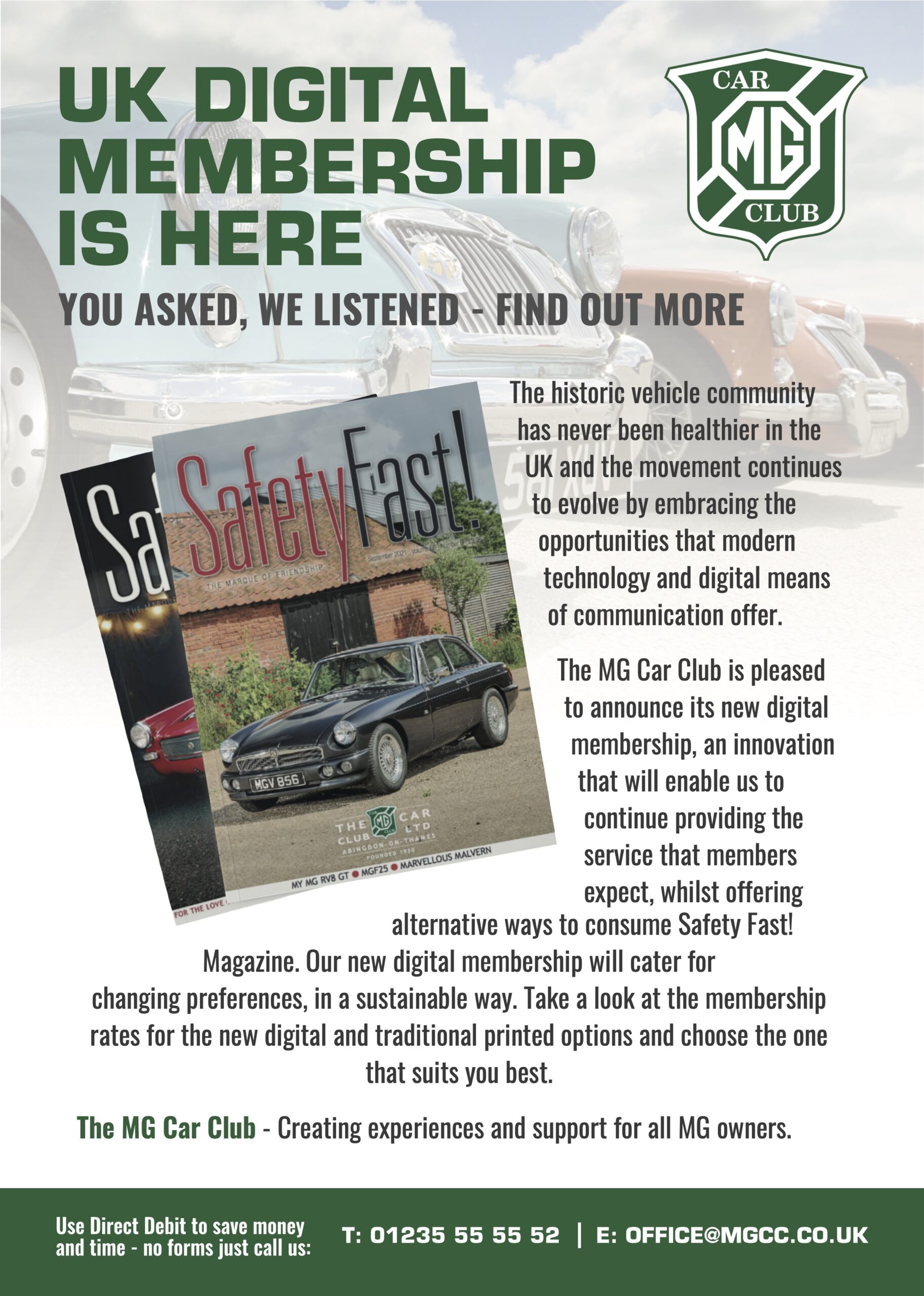Reproduction in whole or in part of any article published on this website is prohibited without written permission of The MG Car Club.
The Real Phil Hill
Following on from our article celebrating the 60th Anniversary of the EX181 record-breaking run at Bonneville, this month we revisit an interview carried out by Wilson McComb with Phil Hill in 1960.
Born in 1927 in Miami, Florida, but a Californian by upbringing, Phil Hill needs no introduction as one of the finest racing drivers. As a member of the works Ferrari team, he had come to race at Silverstone, and in preference to a hotel had chosen to stay at the home of an English friend near Abingdon. It was there that Safety Fast! interviewed him, in a pleasant, whitewashed cottage with a low ceiling, age-darkened oak beams and polished copper pans gleaming in the light from the small, leaded windows. Never really still, the mercurial Hill nevertheless seemed at ease in these surroundings, apart from an occasional darting movement from one chair to another and the incessant nibbling of biscuits (it was one of his many non-smoking periods). We put the tape recorder on the floor, switched on, and started asking questions:
The first car you drove was your aunt’s Oldsmobile, when you were nine?
It wasn’t my aunt, it was a friend of the family… Hey, don’t put Oldsmobile – she wouldn’t have had an Oldsmobile.
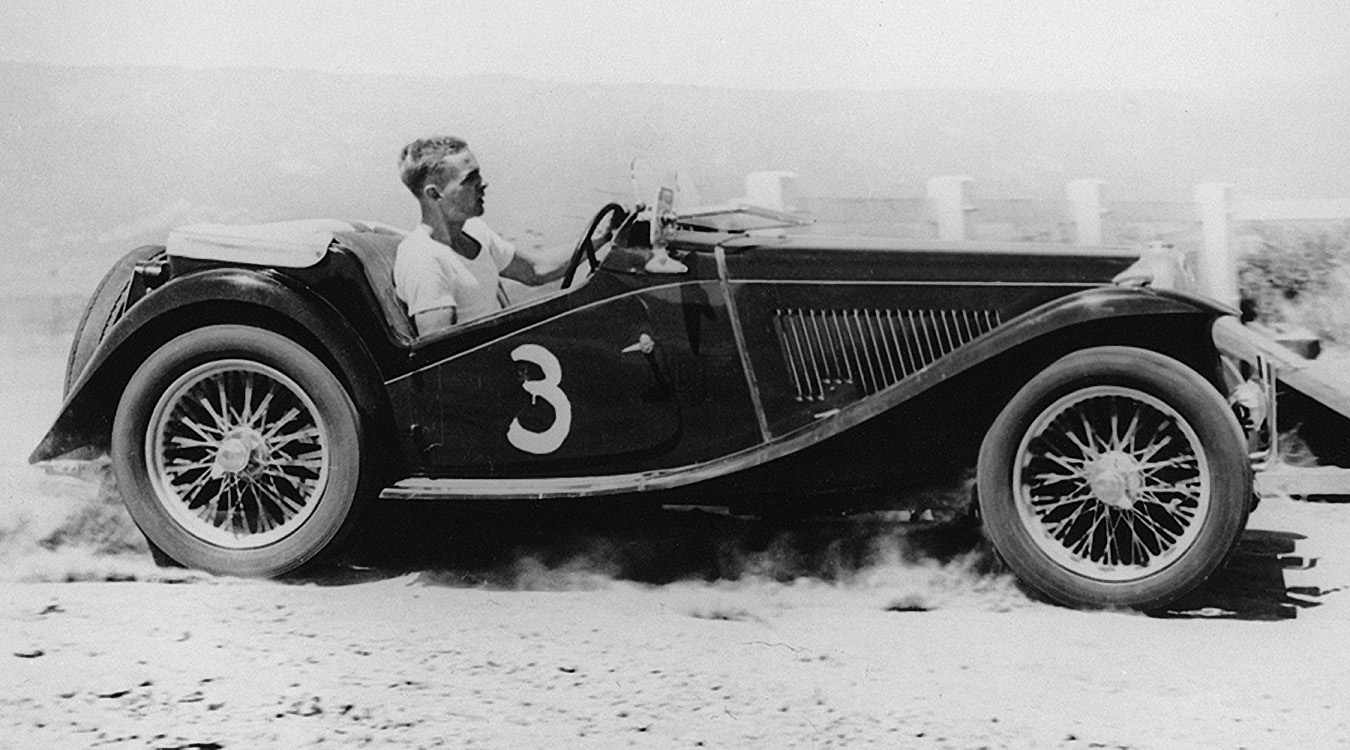
Anyway, that was your first drive. When you were 12 you bought a Model T for $10.00?
Right. A friend had 12 acres of land down at Santa Monica Canyon, where l live. He also had a horse track, a four-mile horse track. He had a Model A and I had the Model T, and we used to charge around there.
Do you reckon that taught you anything?
I suppose so. That Model T would bicycle at the drop of a hat – they were dam’ dangerous.
You left the University of Southern California and became a mechanic in a Los Angeles garage. Full time?
About three years before that I became a part-time mechanic in the Packard garage in Santa Monica – I was working after school, and during summer, and that sort of thing.
You tried midget racing, and you just didn‘t like it?
It wasn’t quite that way – I was very fond of midget racing, just for the identity of motor racing (it was my first experience of motor racing). I did have the opportunity to drive, but didn’t consider myself a driver as far as racing was concerned. Three or four times, I guess, I drove. I showed great promise, but to tell you the truth, it frightened me to death.
Then you bought a ‘TC’ MG?
I did, but I didn‘t do anything with it. I drove the ‘TC’ to the midget races. I was working for the fellow who had the two midget race cars, seven days a week – going to races seven days a week, except that about every fortnight we had to overhaul the things, a complete overhaul in one day.
Why did you choose an MG?
About that time it was the only thing that had any real attraction. It was the only different kind of automobile that was available.
What kind of impression did it make when you first drove the MG?
A terrific impression! This was something completely new to me. I had always been fond of old cars, particularly the veterans; we had a 1931 Pierce in my family – I always liked driving that thing because it had good manners – and, believe it or not, the MG was very much that way. It didn’t have independent suspension, and it didn‘t have any of the vices associated with bad independent suspension – but much, much more – you know, it had performance in the handling department as well as sheer acceleration.
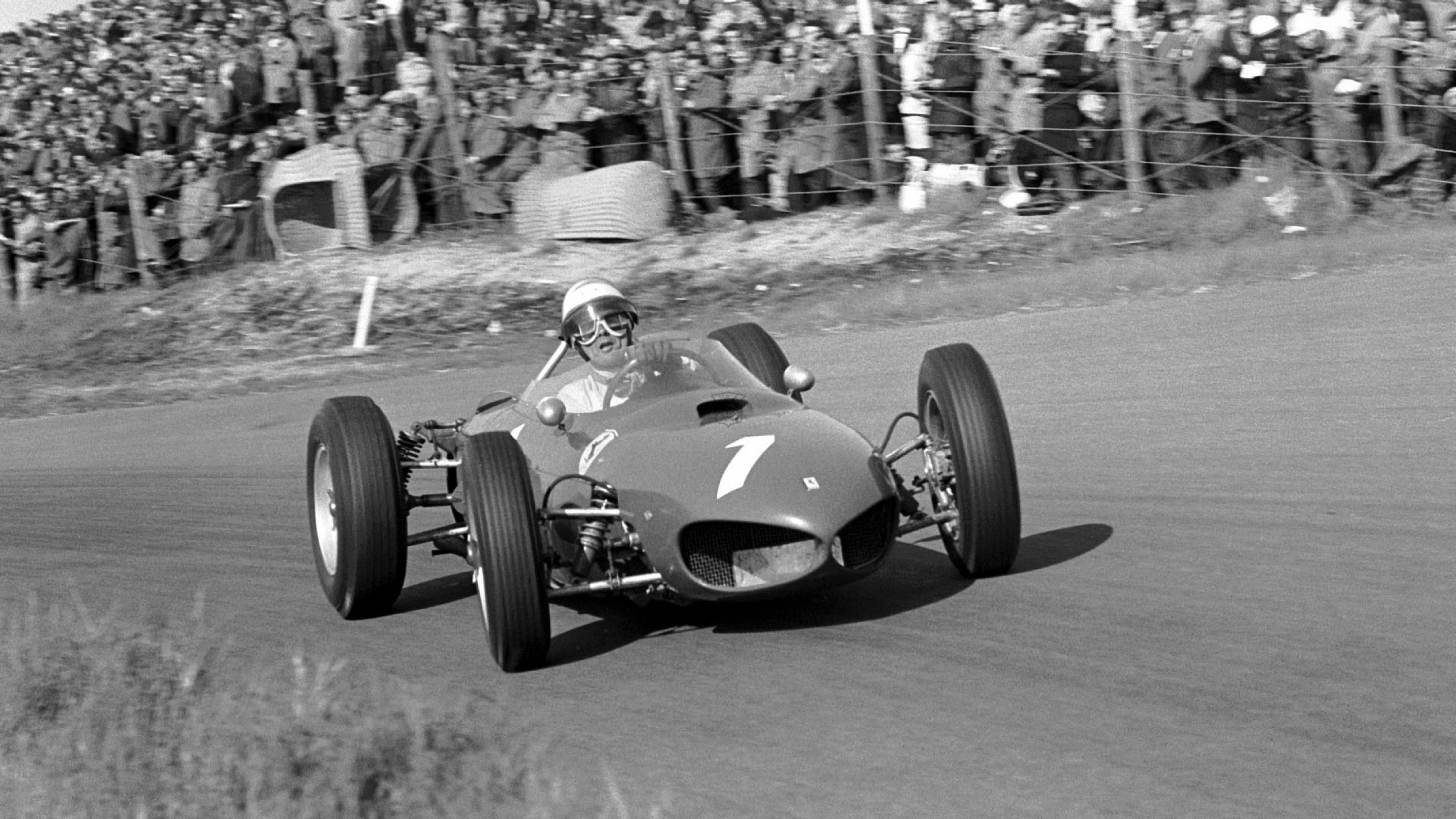
What kind of impression did it make when you first drove the MG?
A terrific impression! This was something completely new to me. I had always been fond of old cars, particularly the veterans; we had a 1931 Pierce in my family – I always liked driving that thing because it had good manners – and, believe it or not, the MG was very much that way. It didn’t have independent suspension, and it didn‘t have any of the vices associated with bad independent suspension – but much, much more – you know, it had performance in the handling department as well as sheer acceleration.
For how long were you content with its standard performance?
Not very long – but that doesn’t reflect on the standard performance; it was just a matter of wanting to make it better if it were possible without doing anything bad to it – I mean, l wouldn’t have thought of putting an American production car engine in it, like some people did.
Did you race it in standard form?
Just rallies and things, and timed trials on closed circuits. The first event l was in, the timed thing, was at Palos Verdes, California (it means Green Hills in Spanish).
Then you started tuning it?
Yeah. I actually had two ‘TC’s. I got one in November ’47 and then in about two or three months l got this Nordec supercharger for it and had a good deal of difficulty with it.
You didn’t do any porting or cleaning up the head before putting the blower on?
Some.
Did you know about Stage tuning?
No, l guess there were no publications on Stage tuning then. The first MG I think I had only about four or five months, then I got another one exactly the same, black with red leather. On the second one I got a Shorrock supercharger, and that one we did a heck of a lot of messing around with.
I lowered the compression ratio and changed the combustion chamber shape a little. We put in larger inlet valves and left the standard exhaust valves, and used heavy springs all the way through. We ported out the inlet side of the supercharger and cast up another neck for it and put on an H.6 the first of the four-cornered S.U. carburettors, you’ll have to check the figures- it’s been a long time.
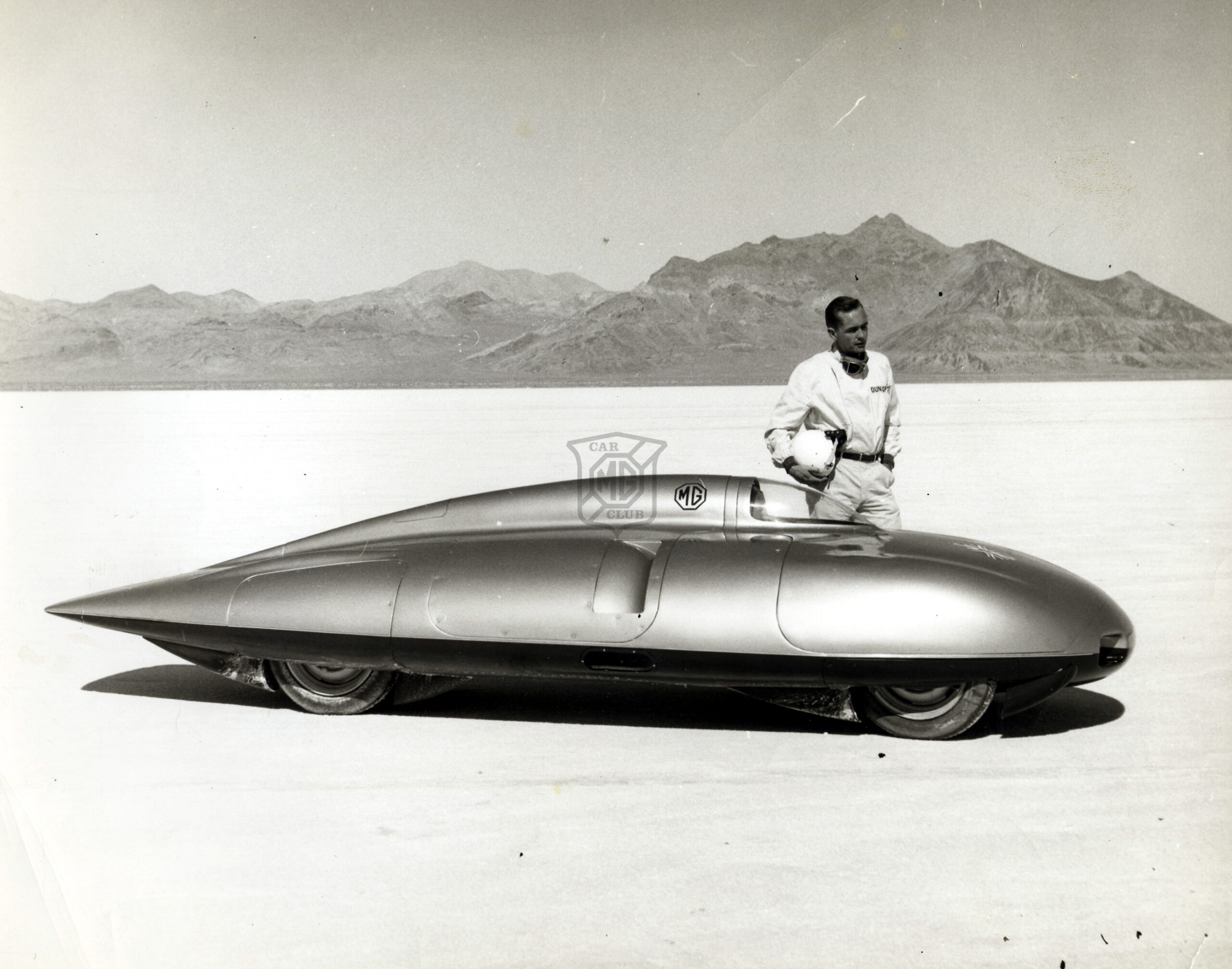
Did you do anything to the chassis?
I think we re-valved the shock absorbers a little bit – we did very little messing with it, actually. But the engine was fabulous on that MG. Really, the only thing bad you could say about it was it was a little difficult to find a plug that would take the range of the engine, because the compression ratio was down around 5.5:1 and the fuel consumption was terrible, but it was as smooth as glass, with no roughness or proneness to detonating. You could run it on regular gasoline, rather than benzole mixture, and it really put out under full-throttle conditions.
When was this?
In ’49 – or was it? I’m getting mixed up with these years. I had that second blown MG quite a while, and we didn’t do all the stuff all at once – we had the Shorrock supercharger on it first without doing the stuff, but ultimately all these things were done to it.
A friend and I had some trick stuff we did for this 1/4-mile racing – terrible things, really. We found we got a more uniform sort of grip with tyres that were all but worn out, and so we’d buy customers’ tyres that were just about worn out and make some kind of arrangement to have them recapped for them, and that worked out beautifully.
Another thing we were doing was using beefed-up left front springs to keep the right rear wheel down, because they were clockwise circuits. But we had to make sure we didn’t let the car sit for long that way, because it would take a permanent set – we had to keep it jacked up all the time off its wheels, and just before putting it on the grid, we’d let it down.
Any trouble keeping the head on?
There wasn’t really, because the b.m.e.p. was so low except under full-throttle operation. We had this great big copper spacer – I think it was 1/8in thick, a big, thick copper spacer; every time we took it off it had to be re-annealed.
And that car gave you your first real race?
Yeah, at Carrell Speedway, Los Angeles – a 1/4-mile paved track. We were racing professionally – gosh, I made a lot of money with that thing. I think I made around $500 the first time I ran. I won every race – l got the fastest qualifying time, won the Trophy dash, won the main event and also won one of the heats.
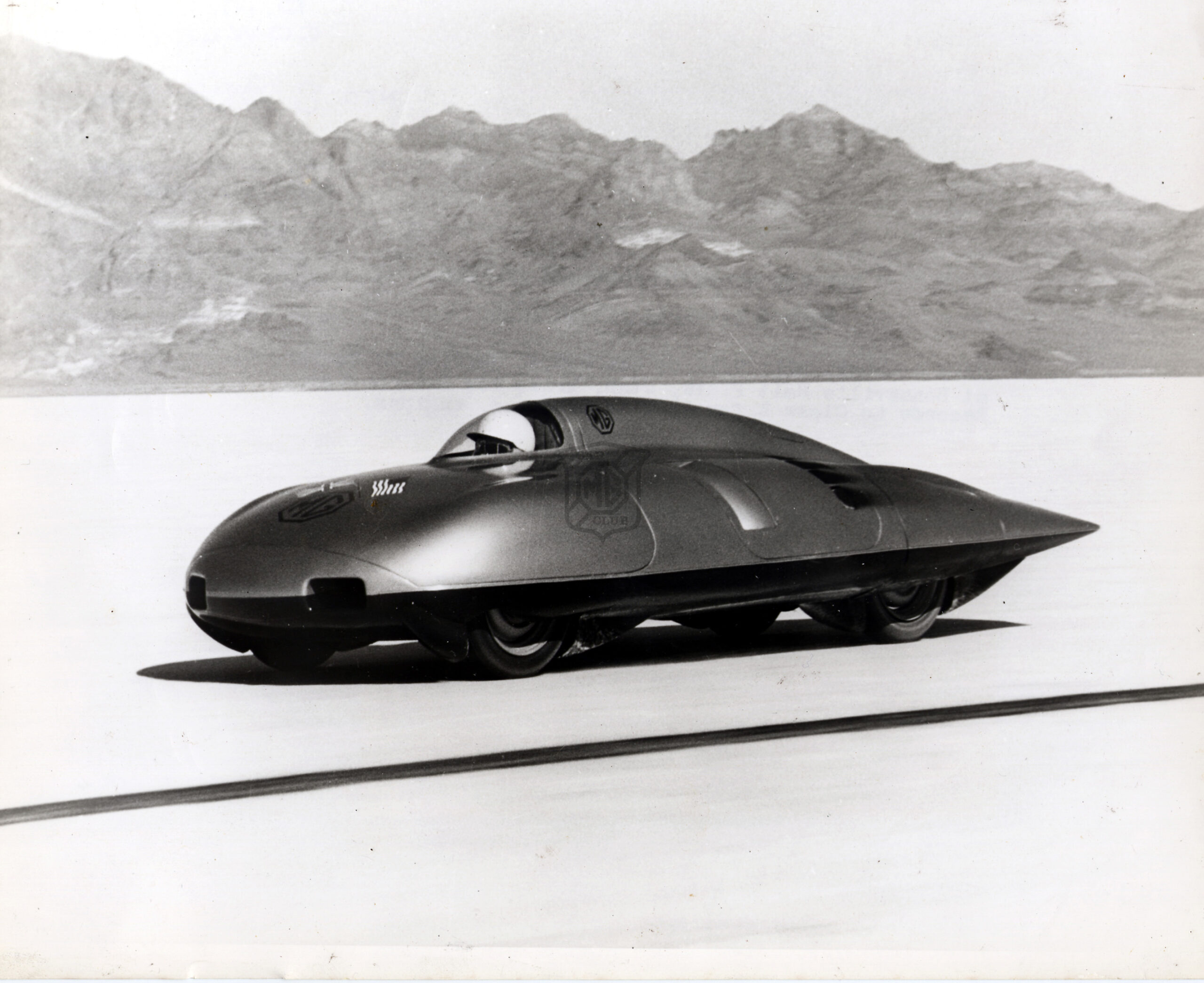
About this time you joined International Motors?
I joined International Motors the first minute I got the first MG – well, I got the MG in November ’47 and within a month I was working for them. I went to work for them mainly so I could buy the supercharger at their cost!
How many races did you do with the ‘TC’?
Oh, a dozen, anyhow, I’m sure – maybe more. Of course, we didn’t have an awful lot of races in those days, it was in its infancy – we were just barely getting started.
A good deal of success?
Terrifically successful – in fact, it was considered about the hottest thing around at the time.
Make you feel good?
Yeah. Not as good as it should have, though, because I needed to think that I was developing as a driver, and the car was actually deserving – and getting – most of the credit.
You felt on top of it, though, didn’t you? … Did you ever feel it was ahead of you?
Oh, no, I never felt it was ahead of me, but still…
Did you feel that someone else would have made more of it?
No, I never would have admitted that, either, but at the same time I wasn’t sure it was me and not the car.
And you never drove another one, so you weren’t able to find out?
Well, let’s put it this way: l knew that the car was about the best MG around, so…
Did you have any thought of turning professional?
Well, we were already automatically professionals. I think we had three races at Carrell Speedway and the crowd fell off pretty badly at the third one – they came for the novelty at first. Not enough people were making enough money, and a lot of the sports car types were not willing to put their MGs (most of them were MGs, that’s mostly what we had) – well, it got a little stale for them in a couple of weeks, especially those who weren’t being very successful. We had trouble fielding enough cars.
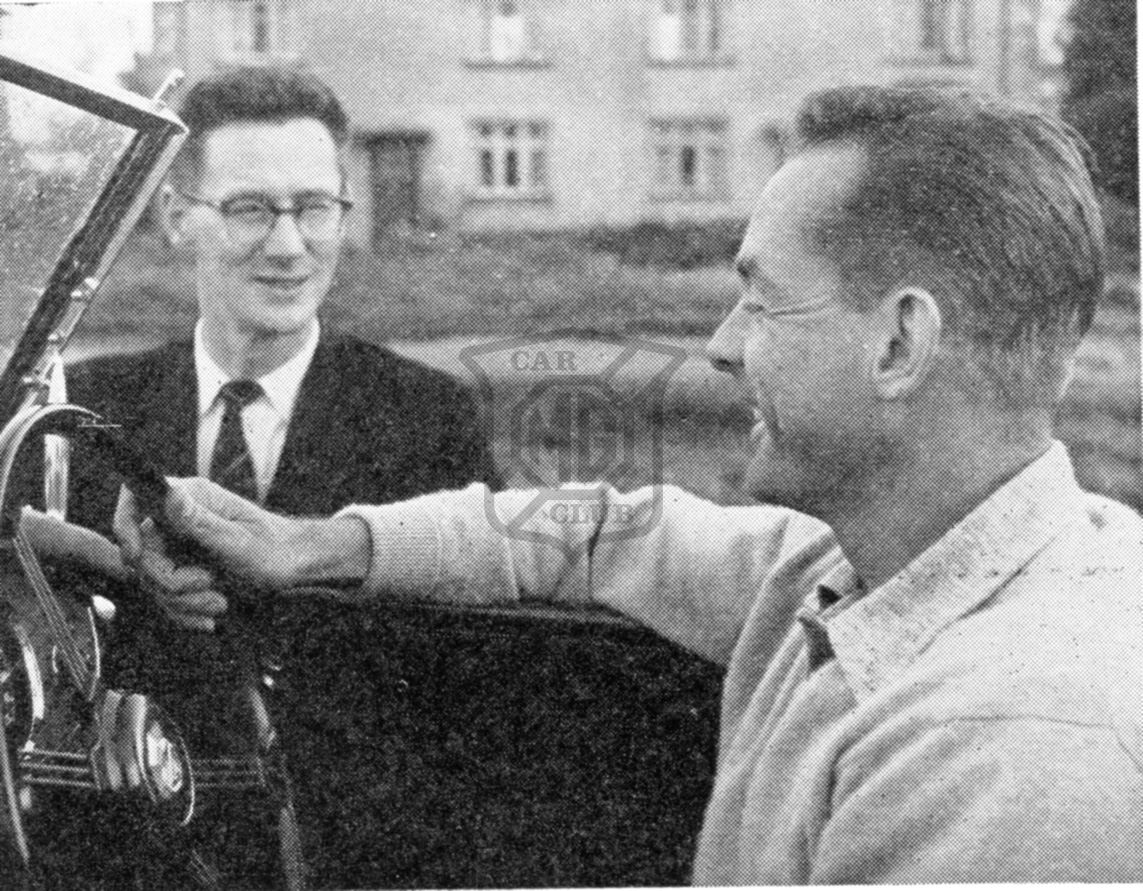
Did you drive MGs on the road much?
I drove that car on the road all the time, and in the end it got so I had to have a ring job every week. I mean, the bore wear was fierce, and every week we had to take the head off the thing and put a hone through it and put a fresh set of rings in,-nice soft ones that would come in in a few laps!
You were still happy with the road-holding, I mean, right-hand corners on full left lock didn’t bother you?
Well, I didn‘t know any better. We did get into some trouble breaking wheels.
Did you lighten the MG?
No, we weren’t allowed to. We weren‘t even allowed to use smaller wheels on it.
Do you reckon that the ‘TC’ taught you anything?
Oh, I learned everything from it, really. I mean, all my early days of really driving a car that I knew was capable of being driven.
If you had to advise another young man who was quite determined, and you thought had the latent ability to become a racing driver, would you say ‘Buy yourself a …’?
Yes, a Sprite or an MG or a Healey or something – y’know, I would, definitely. I think that‘s the way to start, really.
Then you went to England?
Yeah, I was sent here by International Motors.
You arrived on New Year’s Eve, 1949, and you were here for six months. Where did you go first?
I went to Ward End, Birmingham – the old Wolseley factory, now B.M.C. Tractors and Transmissions Branch.
What was the idea?
I was hired as a mechanic by I.M. and I had taken quite an interest in foreign cars and tending to these things, so I wanted to learn as much as l could about it. They wanted to make me a specialist so – gee! – I leapt at the opportunity.
I went to S.U.’s – I was there for a month. I got to know S.U. carburettors pretty dam’ well. I got all kinds of stuff. Peter Swatman (he was then service manager there) he gave me his complete set of S.U. needles that he had when he was an apprentice, when he was on the road – great boxes loaded with needles – I took them all home.
And from there to Jaguar; from there to Rolls-Royce, and then down to MG at Abingdon?
I was there about a month working with Alec Hounslow and Henry Stone (in Development Department). It gave me a great thrill to come to Abingdon. They were just in the process of working on Goldie Gardner’s car – gee! that was really thrilling to me, ’cause y’know we heard a lot about that at home. I learnt an awful lot.
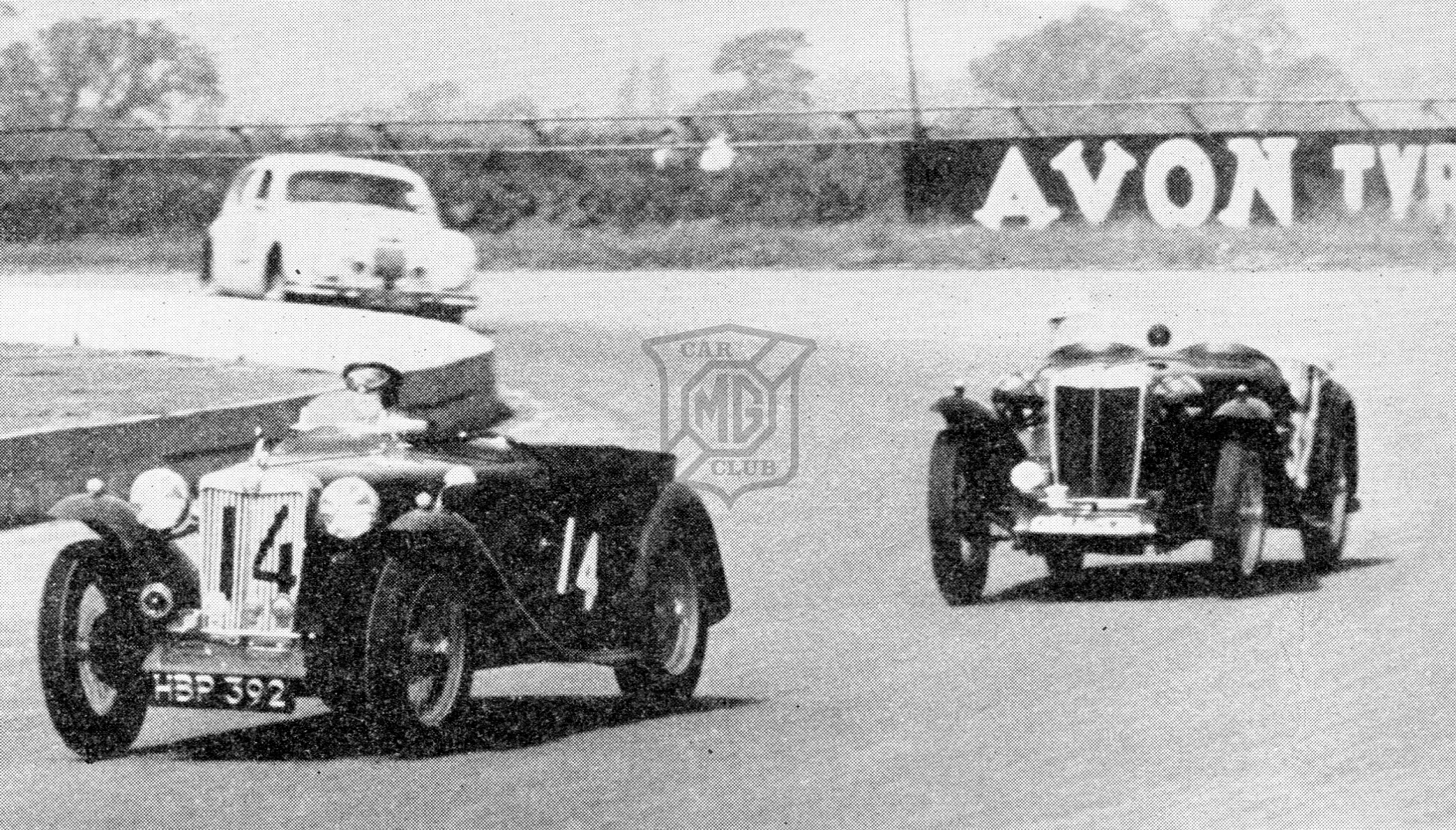
It’s about ten years since America was introduced to sports cars-when the ‘TC’ MG arrived, because we can’t count the pre-war years in the States – and now, today, we have what we’ve never had before, American drivers of full Formula One G.P. calibre. Do you see any connection between those two facts?
You mean the reintroduction of the sports car to the States? Oh, they’re tied right together – without the one the other would never have happened, of course. Just curiosity wouldn’t have allowed an American to come over here and be successful. It was the fact that we did have this interest.
At first it was quite a rebellious group that indulged in it. Before the war it was even more rebellious, I suppose, but it was then carried on by the wealthier types, in the east, particularly. There was a little bit of road racing in the east that most of us were unaware of, in the ‘thirties – the Collier brothers, they used to race MGs, and also there was Eddie Lunkenheimer… Anyhow, it was the post-war boom that did it.
And from there we went on, this Phil Hill being an immensely interesting person when once you’ve got through a rather hard outer shell. We discussed the public’s attitude to motor racing:
(… it cheapens the whole thing – these funny little cars with their funny little drivers may be racing, and it may be safer than we thought, but still, speed kills and anybody that does it purposely must be mad…); the underlying significance of it: (There are two ways of looking at motor racing. One is from the driver’s standpoint, and the other, and I think the more important, is the altruistic pursuit of improvement to a machine); and we became so completely absorbed that a long time went by before we looked down at the tape recorder, and there it was, still buzzing vainly away with an empty input spool because we’d gone right through two reels and we were still talking…

 MG Car Club
MG Car Club
